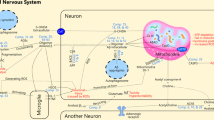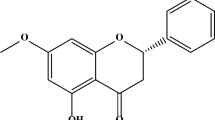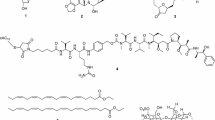Abstract
Parkinson’s disease (PD) is a neurodegenerative disease characterized by tremor, rigidity, bradykinesia, and gait impairment. So far, very few pharmacological agents have been isolated or developed that effectively inhibit the progression of PD. However, several studies have demonstrated that inflammatory processes play critical roles in PD. Therefore, anti-inflammatory agents may suppress disease progression in PD. 11-Dehydrosinulariolide was isolated from cultured soft corals. The anti-inflammatory effect of this molecule has been observed through suppression of the expression of two main pro-inflammatory proteins: inducible nitric oxide synthase and cyclooxygenase-2, in lipopolysaccharide-stimulated macrophage cells. We also found that 11-dehydrosinulariolide significantly reduced 6-hydroxydopamine (6-OHDA)-induced cytotoxicity and apoptosis in a human neuroblastoma cell line (SH-SY5Y). The pharmacological activity of this compound has been studied, and it is associated with the inhibition of 6-OHDA-induced activation of caspase-3 and translocation of nuclear factor kappa B. 11-Dehydrosinulariolide increased the activation of survival-signaling phospho-Akt but not phospho-ERK. The neuroprotective effect of 11-dehydrosinulariolide was assessed here using 6-OHDA-treated SH-SY5Y cells, wherein neuroprotection is mediated through regulation of phosphatidylinositol 3-kinase (PI3K). Furthermore, 11-dehydrosinulariolide caused a significant decrease in caspase-3/7 activity in comparison to the 6-OHDA-treated group, indicating that 11-dehydrosinulariolide has neuroprotective properties. We conclude that 11-dehydrosinulariolide is a promising candidate for the treatment of Parkinson’s disease through its anti-apoptotic and anti-inflammatory action via PI3K signaling.








Similar content being viewed by others
References
Almer G, Guégan C, Teismann P, Naini A, Rosoklija G, Hays AP, Chen C, Przedborski S (2001) Increased expression of the pro-inflammatory enzyme cyclooxygenase-2 in amyotrophic lateral sclerosis. Ann Neurol 49:176–185
Andreasson KI, Savonenko A, Vidensky S, Goellner JJ, Zhang Y, Shaffer A, Kaufmann WE, Worley PF, Isakson P, Markowska AL (2001) Age-dependent cognitive deficits and neuronal apoptosis in cyclooxygenase-2 transgenic mice. J Neurosci 21:8198–8209
Bernard S, France J, Liliane R, Bruno D, Yves A (1983) Reduction of cortical dopamine, noradrenaline, serotonin and their metabolites in Parkinson's disease. Brain Res 275:321–328
Blunden G (2001) Biologically active compounds from marine organisms. Phytother Res 15:89–94
Bohlken A, Cheung BB, Bell JL, Koach J, Smith S, Sekyere E, Thomas W, Norris M, Haber M, Lovejoy DB, Richardson DR, Marshall GM (2009) ATP7A is a novel target of retinoic acid receptor beta2 in neuroblastoma cells. Br J Cancer 100:96–105
Brunet A, Datta SR, Greenberg ME (2001) Transcription-dependent and -independent control of neuronal survival by the PI3K-Akt signaling pathway. Curr Opin Neurobiol 11:297–305
Camandola S, Mattson MP (2007) NF-kappa B as a therapeutic target in neurodegenerative diseases. Expert Opin Ther Targets 11:123–132
Chakraborty C, Hsu CH, Wen ZH, Duh CY, Lin CS (2009a) Drug discovery from marine resources. Curr Sci 97:292–293
Chakraborty C, Hsu CH, Wen ZH, Lin CS (2009b) Anticancer drugs discovery and development from marine organisms. Curr Top Med Chem 9:1536–1545
Chen H, Zhang SM, Hernan MA, Schwarzschild MA, Willett WC, Colditz GA, Speizer FE, Ascherio A (2003) Nonsteroidal anti-inflammatory drugs and the risk of Parkinson disease. Arch Neurol 60:1059–1064
Dauer W, Przedborski S (2003) Parkinson's disease: mechanisms and models. Neuron 39:889–909
Dodel RC, Eggert KM, Singer MS, Eichhorn TE, Pogarell O, Oertel WH (1998) Costs of drug treatment in Parkinson's disease. Mov Disord 13:249–254
Duh CY, Wang SK, Tseng HK, Sheu JH (1998) A novel cytotoxic biscembranoid from the Formosan soft coral Sinularia flexibilis. Tetrahedron Lett 39:7121–7122
Gao HM, Liu B, Zhang W, Hong JS (2003) Novel anti-inflammatory therapy for Parkinson’s disease. Trends Pharmacol Sci 24:395–401
Gold BG, Nutt JG (2002) Neuroimmunophilin ligands in the treatment of Parkinson’s disease. Curr Opin Pharmacol 2:82–86
Hald A, Lotharius J (2005) Oxidative stress and inflammation in Parkinson’s disease: is there a causal link? Exp Neurol 193:279–290
Hartmann A, Hunot S, Michel PP, Muriel MP, Vyas S, Faucheux BA, Mouatt-Prigent A, Turmel H, Srinivasan A, Ruberg M, Evan GI, Agid Y, Hirsch EC (2000) Caspase-3: a vulnerability factor and final effector in apoptotic death of dopaminergic neurons in Parkinson's disease. Proc Natl Acad Sci USA 97:2875–2880
Herin M, Colin M, Tursch B (1976) Chemical studies of marine invertebrates. XXV. Flexibilene, an unprecedented fifteen-membered ring diterpene hydrocarbon from the soft coral Sinularia flexibilis (Coelenterata, Octocorallia, Alcyonacea). Bull Soc Chim Belg 85:801–803
Hoang T, Choi DK, Nagai M, Wu DC, Nagata T, Prou D, Wilson GL, Vila M, Jackson-Lewis V, Dawson VL, Dawson TM, Chesselet MF, Przedborski S (2009) Neuronal NOS and cyclooxygenase-2 contribute to DNA damage in a mouse model of Parkinson disease. Free Radic Biol Med 47:1049–1056
Hornykiewicz O (1966) Dopamine (3-hydroxytyramine) and brain function. Pharmacol Rev 18:925–964
Hornykiewicz O (1970) The metabolism of brain dopamine in human parkinsonism. Riv Pathol Nerv Ment 91:281–286
Hsieh PW, Chang FR, McPhail AT, Lee KH, Wu YC (2003) New cembranolide analogues from the Formosan soft coral Sinularia flexibilis and their cytotoxicity. Nat Prod Res 17:409–418
Hunot S, Hirsch EC (2003) Neuroinflammatory processes in Parkinson’s disease. Ann Neurol 53:925–962
Hunot S, Brugg B, Ricard D, Michel PP, Muriel MP, Ruberg M, Faucheux BA, Agid Y, Hirsch EC (1997) Nuclear translocation of NF-kappa B is increased in dopaminergic neurons of patients with Parkinson disease. Proc Natl Acad Sci USA 94:7531–7536
Iadecola C, Xu X, Zhang F, el-Fakahany EE, Ross ME (1995) Marked induction of calcium-independent nitric oxide synthase activity after focal cerebral ischemia. J Cereb Blood Flow Metab 15:52–59
Iravani MM, Kashefi K, Mander P, Rose S, Jenner P (2002) Involvement of inducible nitric oxide synthase in inflammation-induced dopaminergic neurodegeneration. Neuroscience 110:49–58
Jean YH, Chen WF, Duh CY, Huang SY, Hsu CH, Lin CS, Sung CS, Chen IM, Wen ZH (2008) Inducible nitric oxide synthase and cyclooxygenase-2 participate in anti-inflammatory and analgesic effects of the natural marine compound lemnalol from Formosan soft coral Lemnalia cervicorni. Eur J Pharmacol 578:323–331
Jean YH, Chen WF, Sung CS, Duh CY, Huang SY, Lin CS, Tai MH, Tzeng SF, Wen ZH (2009) Capnellene, a natural marine compound derived from soft coral, attenuates chronic constriction injury-induced neuropathic pain in rats. Br J Pharmacol 158:713–725
Jiang Z, Yu PH (2005) Involvement of extracellular signal-regulated kinases 1/2 and (phosphoinositide 3-kinase)/Akt signal pathways in acquired resistance against neurotoxin of 6-hydroxydopamine in SH-SY5Y cells following cell-cell interaction with astrocytes. Neuroscience 133:405–411
Kamel HN, Slattery M (2005) Terpenoids of Sinularia: chemistry and biomedical applications. Pharm Biol 43:253–269
Lee KY, Sung SH, Kim YC (2006) Neuroprotective bibenzyl glycosides of Stemona tuberose roots. J Nat Prod 69:679–681
Lev N, Melamed E, Offen D (2003) Apoptosis and Parkinson's disease. Prog Neuropsychopharmacol Biol Psychiatry 27:245–250
Liberatore GT, Jackson-Lewis V, Vukosavic S, Mandir AS, Vila M, McAuliffe WG, Dawson VL, Dawson TM, Przedborski S (1999) Inducible nitric oxide synthase stimulates dopaminergic neurodegeneration in the MPTP model of Parkinson disease. Nat Med 5:1403–1409
Linder J, Stenlund H, Forsgren L (2010) Incidence of Parkinson's disease and parkinsonism in northern Sweden: a population-based study. Mov Disord 25:341–348
Marchetti B, Abbracchio MP (2005) To be or not to be (inflamed)—is that the question in anti-inflammatory drug therapy of neurodegenerative disorders? Trends Pharmacol Sci 26:517–525
Martinez A (2007) Marine-derived drugs in neurology. Curr Opin Investig Drugs 8:525–530
Mosley RL, Benner EJ, Kadiu I, Thomas M, Boska MD, Hasan K, Laurie C, Gendelman HE (2006) Neuroinflammation, oxidative stress and the pathogenesis of Parkinson's disease. Clin Neurosci Res 6:261–281
Nicholson DW (1999) Caspase structure, proteolytic substrates, and function during apoptotic cell death. Cell Death Differ 6:1028–1042
Proksch P, Edrada RA, Ebel R (2002) Drugs from the seas—current status and microbiological implications. Appl Microbiol Biotechnol 59:125–134
Rascol O, Payoux P, Ory F, Ferreira JJ, Brefel-Courbon C, Montastruc JL (2003) Limitations of current Parkinson's disease therapy. Ann Neurol 53:3–12
Riccio A, Ahn S, Davenport CM, Blendy JA, Ginty DD (1999) Mediation by a CREB family transcription factor of NGF-dependent survival of sympathetic neurons. Science 286:2358–2361
Serra PA, Esposito G, Enrico P, Mura MA, Migheli R, Delogu MR, Miele M, Desole MS, Grella G, Miele E (2000) Manganese increases L-DOPA auto-oxidation in the striatum of the freely moving rat: potential implications to L-DOPA long-term therapy of Parkinson's disease. Br J Pharmacol 130:937–945
Singh RP, Sharad S, Kapur S (2004) Free radical and oxidative stress in neurodegenerative disease: relevance of dietary antioxidants. JIACM 5:218–225
Tak PP, Firestein GS (2001) NF-kappa B: a key role in inflammatory diseases. J Clin Invest 107:7–11
Tatton WG, Chalmers-Redman R, Brown D, Tatton N (2003) Apoptosis in Parkinson's disease: signals for neuronal degradation. Ann Neurol 3:61–70
Teismann P, Tieu K, Choi DK, Wu DC, Naini A, Hunot S, Vila M, Jackson-Lewis V, Przedborski S (2003) Cyclooxygenase-2 is instrumental in Parkinson's disease neurodegeneration. Proc Natl Acad Sci USA 100:5473–5438
Werner P, Mytilineou C, Cohen G, Yahr MD (1994) Impaired oxidation of pyruvate in human embryonic fibroblasts after exposure to L-dopa. Eur J Pharmacol 263:157–162
Wyss-Coray T, Mucke L (2002) Inflammation in neurodegenerative disease—a double-edged sword. Neuron 35:419–432
Xia Z, Dickens M, Raingeaud J, Davis RJ, Greenberg ME (1995) Opposing effects of ERK and JNK-p38 MAP kinases on apoptosis. Science 270:1326–1331
Yuan J, Yankner BA (2000) Apoptosis in the nervous system. Nature 407:802–809
Zhang D, Zhang JJ, Liu GT (2007) The novel squamosamide derivative FLZ protects against 6-hydroxydopamine-induced apoptosis through inhibition of related signal transduction in SH-SY5Y cells. Eur J Pharmacol 561:1–6
Zhou C, Huang Y, Przedborski S (2008) Oxidative stress in Parkinson’s disease: a mechanism of pathogenic and therapeutic significance. Ann NY Acad Sci 1147:93–104
Acknowledgments
The study was supported by research grants from Chang Gung Memorial Hospital (CMRPG881141) and the National Science Council of Taiwan (99-2313-B-110-003-MY03 and 100-2325-B-110-001).
Author information
Authors and Affiliations
Corresponding author
Rights and permissions
About this article
Cite this article
Chen, WF., Chakraborty, C., Sung, CS. et al. Neuroprotection by marine-derived compound, 11-dehydrosinulariolide, in an in vitro Parkinson’s model: a promising candidate for the treatment of Parkinson’s disease. Naunyn-Schmiedeberg's Arch Pharmacol 385, 265–275 (2012). https://doi.org/10.1007/s00210-011-0710-2
Received:
Accepted:
Published:
Issue Date:
DOI: https://doi.org/10.1007/s00210-011-0710-2




